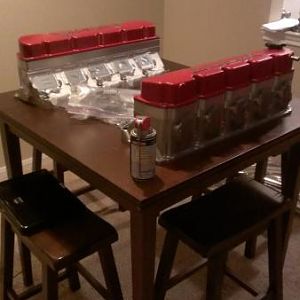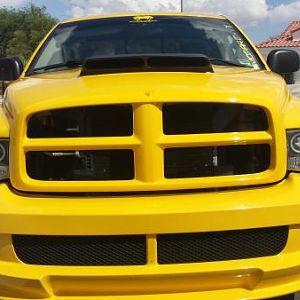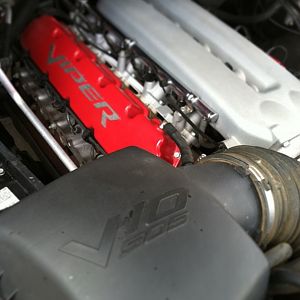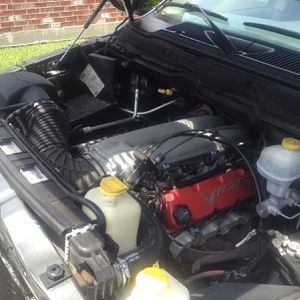I prefer mine to run cooler and have done so for 25 years on everything from 4cyl, 6cyl, 8cyl and obviously my 10. My reasons are plentiful and here are a few.
1. Cooler engine performs better whether carbuerated or FI. There are many maps in the PCM that are based off temperature and intake air/ambient air temps. Timing is taken away the hotter these get.

2. Condenser heating due to radiator placement. The cooler we have the radiator/condenser, the cooler your A/C
3. Oil breakdown is more prominent the higher the temps. I like my oil temps to be around my coolant temp of 185. Your cooling system setup efficiency is directly correlated to your oil temps and degradation.
4. Electrical wiring and components! They hate heat and will turn looming and wiring brittle and cause nightmares chasing glitches later down the road. The cooler the engine, the longer the these wires stay soft and bendable.
5. Quicker cool downs between laps racing (for us that race)
Makes a works if difference cooling down from 210 versus 185. That's 25* cooler. The closer you are to the boiling point of your water (212*)in the system the longer it takes to cool from that point.
Now the couple drawbacks....
1. In the winter your heat will not be as hot. Now is it got enough to warm your ass, yes! Plenty warm enough, but not as hot as stock.
2. To remove condensation naturally occurring in the engine, you'll have to drive longer. In other words if you have a short 5 minute commute to work and home and rarely go anywhere else, you'll not burn off the condensation as fast. If you change your oil regularly this is no issue but you'd still be better off running around 200* in this instance.
In a nutshell, :wavey:





